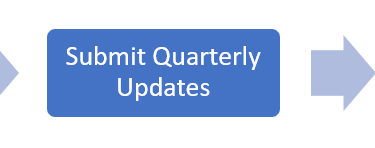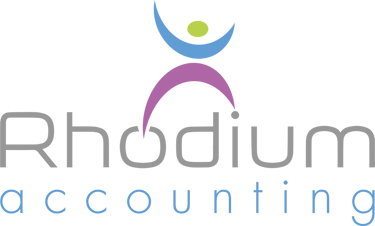Are You a Self-Employed Carer? If so are you ready for Making Tax Digital for IncomeTax?
MAKING TAX DIGITAL FOR INCOME TAX


Making Tax Digital for Income Tax (MTD) is the UK government's strategy to implement a fully digital tax system and it requires that taxpayers keep digital records and use an MTD compatible software to make tax submissions electronically. In simple terms self employed business owners and landlorsd have to move away from keeping paper records and keep everything digitally such as on scanned documents, pictures, spreadsheets.
Stated differently MTD for Income Tax, is a new system for recording and reporting income and expenses to HMRC if you are self -employed and or receive property income.
The Making Tax Digital project started with Making Tax Digital for VAT. That aspect of the project has now been completed with all VAT registered business now required to file their VAT returns using a compliant software regardless of their turnover. The focus have now moved to Income tax and more specifically self-employed individuals and individuals receiving property income.
Making Tax Digital for Income Tax comes into effect in April 2026 and will apply to self-employed business owners and unincorporated landlords (self-employed landlords) with a total business or property income above £50,000 per year. This threshold applies to total / gross income not profit. Explained in another way, this £50,000 threshold applies to your total business income in the year before you deduct any costs or expenses. So, unless your business makes less than £50k in a year you will be affected from April 2026.
You will need to select and use a compliant digital software to submit quarterly summaries of your business’s income and expenses. In total you will need to file 4 returns in the year with the dates below as provided by HMRC for the first year.
Quarter 1 : 6th April 2026 – 5th July 2026
Quarter 2 : 6th July 2026 – 5th October 2026
Quarter 3: 6th October 2026 – 5th January 2027
Quarter 4: 6th January 2027 – 5th April 2027
Each of these quarters have a filing deadline of a month and two days after exactly on the 7th of the following month. This makes it easy to remember so 7th of August, 7th of November, 7th of February and 7th of May respectively. Each subsequent submission supersedes the previous one.
Although the transition to filing digital records is starting with those earning £50,000 and above, it will eventually apply to all self-employed individuals earning £20,000 from April 2028. From April 2027 it will affect those earning £30,000 and above.
You can follow the MTD from Income Tax rules voluntarily if you want to, even if you are not legally required to do so yet.
My suggestion is to start having the conversation with your accountant (if you have one ) now if you haven’t already. And if you have always done your tax returns your self then you need to thinking about how you are going to make the transition to digital filing and if you are unsure of how to go about doing so, we will be happy to help.
What is the Process and the timelines?
HMRC will review all Self-Assessment (SA) filed for the 2024/25 tax year, due by the 31st of January 2026.
If your income for that tax year is over £50,000 HMRC will write to you in February 2026 to notify you that you are within the scope of MTD for Income tax and will need to comply with MTD for IT from April 2026.
If you wait to receive a letter from HMRC telling you are withing the scope for MTD, you will not have long to get prepared. So it will be a good idea to file your 2024/25 early so you know if you are going to be within scope from April 2026, so you have plenty of time to prepare and get your head around the new process.
HMRC have created a tool to help you check when they will be required to follow the MTD rules, link below.
https://www.gov.uk/guidance/check-if-youre-eligible-for-making-tax-digital-for-income-tax
What are the Making Tax Digital for Income Tax Requirements?
The requirements in 3 simple steps are:
Now let’s look at each one in greater detail.
Keeping Digital Records
This is a new legal requirement to maintain business records digitally which means a digital record keeping system has to be used. This means you will either have to use accounting software package, an app or a spreadsheet to keep your business records. You will find a list of HMRC approved products here:
https://www.gov.uk/guidance/find-software-thats-compatible-with-making-tax-digital-for-income-tax
With HMRC confrming they will not be producing their version, you will most likely will need to look at a few options before deciding which to do with.
As explained earlier you will need keep separate records for each income source, so you may need to pay for more than one software licence within the product if you have several sources of income.
Submit Quarterly Updates
You will be required to submit quarterly updates to HMRC to declare income and expenses for the period of the update. The intention is for these updates / returns to be automatically generated by the record keeping system, so this should be an easy process. One thing to also bear in mind is that the updates will be cumulative as below, with each update superseding previous ones:
1. First quarter – 6th April – 5th July – filed latest by 7th August
2. Second quarter – 6th April – 5th October – submitted to HMRC by 7th November
3. Third quarter – 6th April – 5th January -filed to HMRC by 7th February
4. Fourth Quarter – 6th April – 5th April – due by 7th May
It is possible to elect for the update to tie in with a calendar month end, and you should be able to do this in your chosen software. If you make this election, the periods become:
1st April – 30th June – due 7th August
1st April – 30th September – due 7th November
1st April – 31st December – 7th February
1st April – 31st March – 7th May
Finalise your tax position for the Tax Year
As part of the finalisation process you will need to make any adjustments to your income and expenses in your software to arrive at the final taxable profit for the accounting period of the business. Once you have reviewed all your numbers and are satisfied that they are accurate, you will need to make a final declaration to confirm the information provided is complete and correct and that you have finalised your income tax position.
The final declaration can only be made once the relevant tax year has ended and must be made by 31st January following the end of the tax year.
MTD for income tax replaces the completion of the traditional self-assessment tax return. It is also worth noting that HMRC free online self-assessment tax return filing service will not be available to tax payers in MTD.
You can make changes to your final declaration if required up to 12 months after the filing deadline.
If you miss the deadline for submitting a final declaration you may need to pay a penalty. A new points based penalty system for MTD for Income Tax will come into effect from April 2026.
Making Income Tax Payments to HMRC
Income Tax payments are not affected by MTD and so the payment dates remain the same as they were under traditional self-assessment. This means payments will be due on the 31st January and also on 31st July if you are with the payments on account system.
Getting Prepared
If you know or think you are likely to be in scope of MTD, there are two steps that you need to take to be ready to comply.
The first step is to sign up for MTD for Income Tax with HMRC and you can do that here:
https://www.gov.uk/guidance/sign-up-your-business-for-making-tax-digital-for-income-tax
If you have more than one MTD ‘source of income’ e.g, have rental income and self-employed business income, you need to sign up all the sources of income as part of the registration process.
Choose your software – whether you are going to be using an app, a spreadsheet and an accounting software and the link below from HMRC will take you to a list of products currently approved by the HMRC
https://www.gov.uk/guidance/find-software-thats-compatible-with-making-tax-digital-for-income-tax
Exemptions and Exclusions
Making Tax Digital for Income Tax will not apply to you if you are a foster carer or a shared lives carer and your only qualifying income is qualifying care income.
The law states that a person is digitally excluded if for any reason it is not reasonably practicable for them to use electronic communications or keep digital electronic records. In simple terms that means you will be able to apply for exemption from MTD for IT if for example you live in a remote location with poor broad band access (unreliable broadband connection ), age, disability prevents you from using computers etc.
You will also be able to pally for exemption if you a practicing member of a religious society or order whose beliefs are incompatible with using electronic communications or keeping electronic records.
At the time of writing this article, HMRC was yet to confirm the process for claiming exemption but it is expected that it will be possible to make an application for exemption from October 2025
If what you have read still sounds a little confusing and would like some support? We can help. Simply complete the form below and we will be in touch within 24 hours.


